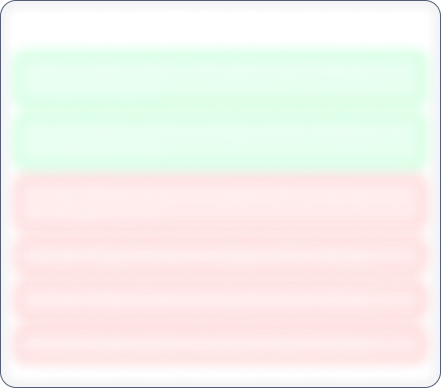Year End Sale 50% off
Highway Infrastructure

No Data Available
Investor Sentiment
Highway Infrastructure Share price and Fundamental Analysis
Key Metrics
Included In
Stock Returns
Stock Heatmap

No Stocks
Smart Score

Unlock Smart Score
See Detailed Analysis & Insights


Unlock Insights
See Detailed Analysis & Insights
Technicals
Returns Calculator
If you would have investedResearch Report
No Research Report
Corporate Action

No Data Available
Financials
Key Ratios
ROE
Avg ROE (3 Yrs) : NaN%
ROCE
Avg ROCE (3 Yrs) : NaN%
ROA
Avg ROA (3 Yrs) : NaN%
NPM
Avg NPM (3 Yrs) : NaN%
Dividend History
5 Year FactSheet
Documents

No Data Available
News
Highway Infrastructure Management and History
Company Management


Unlock Management Data
See Detailed Analysis & Insights
Company History
Highway Infrastructure Limited was originally set up as a Partnership Firm in 1995 in the name of Highway Enterprises in carrying out similar line of activities. The Partnership Firm was converted into a Private Limited Company registered a 'Highway Infrastructure Private Limited' vide certificate of incorporation dated February 10, 2006 issued by the Registrar of Companies, Gwalior, Madhya Pradesh & Chhattisgarh. Further the status of Company was changed to a Public Limited Company through a fresh Certificate of Incorporation issued on 04 May, 2018 and consequent upon change of name to Highway Infrastructure Limited by the Registrar of Companies, Gwalior, Madhya Pradesh & Chhattisgarh.
The Company is basically dealing in projects of roads, highway, by passes, express ways, bridges, flyovers, construction of residential flats etc. in Indore, Madhya Pradesh. The Company specializes in maintenance and operation of Roads & Highway and other activities related to infrastructure projects. Currently the Companys name has become synonymous with the quality construction business in Indore, Bhopal, Dhar, Hoshangabad and other nearby places. It has evolved over the years and with help of technical staff has now become a key player in highway projects.
The Company has been seeking growth by investing in a variety of systematically identified businesses, making it a well diversified conglomerate in projects such as asphalt road construction, concrete road construction, buildings, bridges & culverts and all other civil works related to development of infrastructure. From FY 2011, it has ventured into the real estate business having two business verticals consisting of Civil Construction into roads and other road related works; Construction of Bridges; executing Real Estate Development projects independently with other developers through joint development agreement.
As on August 29, 2018 Company has 8 ongoing projects in the roads & bridges sector which includes construction, improving, widening, strengthening, upgradation and rehabilitation of two and four lane highways construction of high level bridge and construction of road network costing Rs 108.17 Crores. It has completed the residential project in New York City costing Rs 90 Crore in 2018. Apart from these, it completed roads and highways projects costing Rs. 367 Crore.
The Company is proposing a Public Issue of 34,76,000 Equity Shares aggregating to Rs 23.64 Crore.
Highway Infrastructure Share Price
Highway Infrastructure share price reflects investor sentiment toward the company and is impacted by various factors such as financial performance, market trends, and economic conditions. Share price is an indicator which shows the current value of the company's shares at which buyers or sellers can transact.
Highway Infrastructure Market Cap
Market capitalization of Highway Infrastructure indicates the total value of its outstanding shares. Marketcap is calculated by multiplying share price and outstanding shares of the company. It is a helpful metric for assessing the company's size and market Valuation. It also helps investors understand how Highway Infrastructure is valued compared to its competitors.
Highway Infrastructure PE Ratio
Highway Infrastructure PE ratio helps investors understand what is the market value of each stock compared to Highway Infrastructure 's earnings. A PE ratio higher than the average industry PE could indicate an overvaluation of the stock, whereas a lower PE compared to the average industry PE could indicate an undervaluation.
Highway Infrastructure PEG Ratio
The PEG ratio of Highway Infrastructure evaluates its PE ratio in relation to its growth rate. A PEG ratio of 1 indicates a fair value, a PEG ratio of less than 1 indicates undervaluation, and a PEG ratio of more than 1 indicates overvaluation.
Highway Infrastructure ROE (Return on Equity)
Return on Equity (ROE) measures how effectively Highway Infrastructure generates profit from shareholders' equity. A higher ROE of more than 20% indicates better financial performance in terms of profitability.
Highway Infrastructure ROCE (Return on Capital Employed)
Return on Capital Employed (ROCE) evaluates the profitability of Highway Infrastructure in relation to its capital employed. In simple terms, ROCE provides insight to investors as to how well the company is utilizing the capital deployed. A high ROCE of more than 20% shows that the business is making profitable use of its capital.
Highway Infrastructure Total Debt
Total debt of Highway Infrastructure shows how much the company owes to either banks or individual creditors. In simple terms, this is the amount the company has to repay. Total debt can be a very useful metric to show the financial health of the company. Total debt more than equity is considered to be a bad sign.
Highway Infrastructure Debt to Equity Ratio
The Debt-to-Equity (DE) ratio of Highway Infrastructure compares its total debt to shareholders' equity. A higher Debt to Equity ratio could indicate higher financial risk, while a lower ratio suggests that the company is managing its debt efficiently.
Highway Infrastructure CAGR (Compound Annual Growth Rate)
CAGR shows the consistent growth rate of Highway Infrastructure over a specific period, whether it is over a month, a year, or 10 years. It is a key metric to evaluate the company’s long-term growth potential. Main metrics for which CAGR is calculated are net sales, net profit, operating profit, and stock returns.
Highway Infrastructure Technical Analysis
Technical analysis of Highway Infrastructure helps investors get an insight into when they can enter or exit the stock. Key components of Highway Infrastructure Technical Analysis include:
Support Levels (S1, S2, S3)
There are usually multiple support levels, but the main support levels for a stock are S1, S2, S3. Support levels indicate price points where stock might get support from buyers, helping the stock stop falling and rise.
Resistance Levels (R1, R2, R3)
There are usually multiple resistance levels, but the main resistance levels for a stock are R1, R2, R3. Resistance levels represent price points where Highway Infrastructure shares often struggle to rise above due to selling pressure.
Highway Infrastructure Dividends
Dividends refer to the portion of the company’s profits distributed to its shareholders. Dividends are typically paid out in cash and reflect Highway Infrastructure ’s financial health and profitability.
Highway Infrastructure Bonus Shares
Bonus shares are usually given by companies to make the stock more affordable, increase liquidity, boost investor confidence, and more.
Highway Infrastructure Stock Split
Stock split increases the number of its outstanding shares by dividing each existing share into multiple shares. When the company offers a stock split, the face value of the stock reduces in the same proportion as the split ratio.
Highway Infrastructure Financials
The financials of Highway Infrastructure provide a complete view to investors about its net sales, net profit, operating profits, expenses, and overall financial health. Investors can analyze financial data to assess the company’s stability and also understand how the company has been growing financially.
Highway Infrastructure Profit and Loss Statements
The profit and loss statement of Highway Infrastructure highlights its net sales, net profit, total expenditure, and operating profits in the current financial year. This Profit and Loss statement is crucial for evaluating the profitability and financial stability of Highway Infrastructure .
Highway Infrastructure Balance Sheet
The balance sheet presents a snapshot of Highway Infrastructure ’s assets, liabilities, and equity of shareholders, providing insights into the financials of the company.
Highway Infrastructure Cashflow Statements
Cashflow statements track the company's cash inflows and outflows over a period. It is an essential tool for understanding how well the company manages its liquidity and finances.


